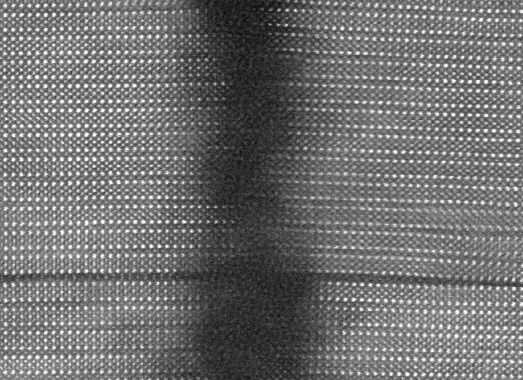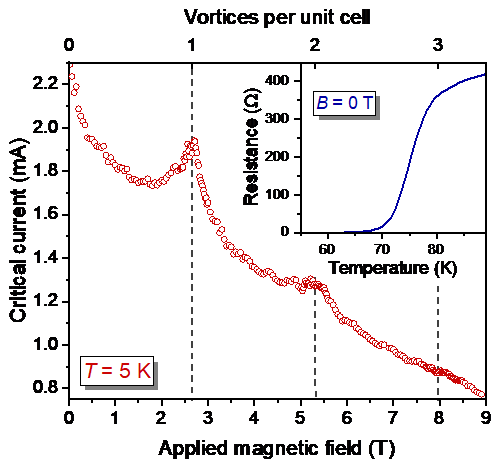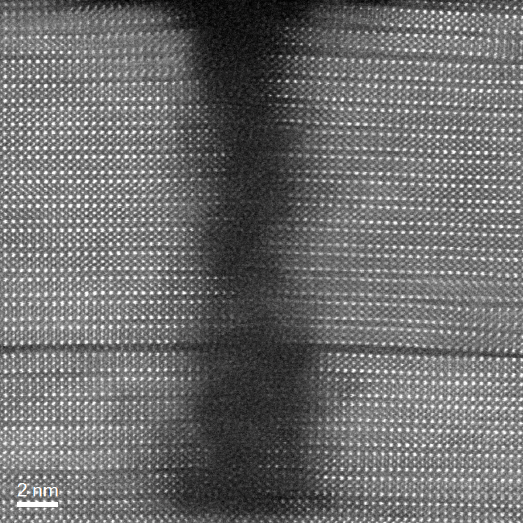
Virtual Mobility Grant Univ. Tübingen (Germany) – CSIC Zaragoza (Spain) – Univ. Vienna (Austria)– PSI Villigen (Switzerland) – Univ. Cambridge (UK)
The VMG „Nanoscale modification of YBCO films with a focused He ion beam“ has strengthened the collaboration between the groups at the Univ. Tübingen (D. Koelle), CSIC Zaragoza (J. M. de Teresa), Univ. Vienna (W. Lang), PSI Villigen (A. Kleibert) and Univ. Cambridge (J. Driscoll). Several chips with YBCO films, grown epitaxially by pulsed laser deposition on LSAT substrates, have been fabricated. A variety of structures was irradiated with a focused He ion beam and investigated by transmission electron microscopy (TEM) and electric transport measurements. For different types of irradiation patterns, we found the critical dose above which amorphization sets in. Measurements of the critical current in hexagonal arrays of defect columns created by the focused ion beam reveal strong vortex commensurability effects in a hitherto unexplored parameter range, i.e., at unprecedented high magnetic fields and far below the critical temperature.
| (a)
|
(b) |
| Figure: (a) High-resolution cross-section TEM image of YBCO film, irradiated with focused He ion beam with a dose of 1300 ions/nm. This dose induces an amorphous channel (dark region) of 3 – 5 nm width. (b) Critical current at 5 K as a function of applied magnetic field of a YBCO microbridge irradiated with a hexagonal pattern with 30 nm spacings. The peaks demonstrate enhanced vortex pinning at the commensurability fields. The inset shows the superconducting transition in zero magnetic field. | |

